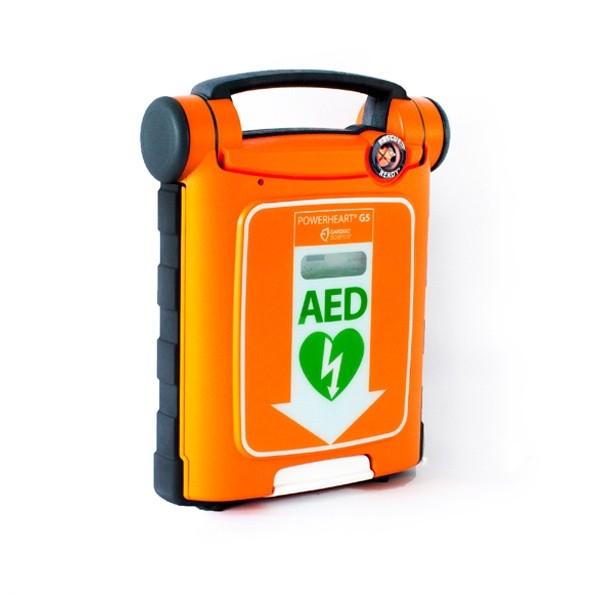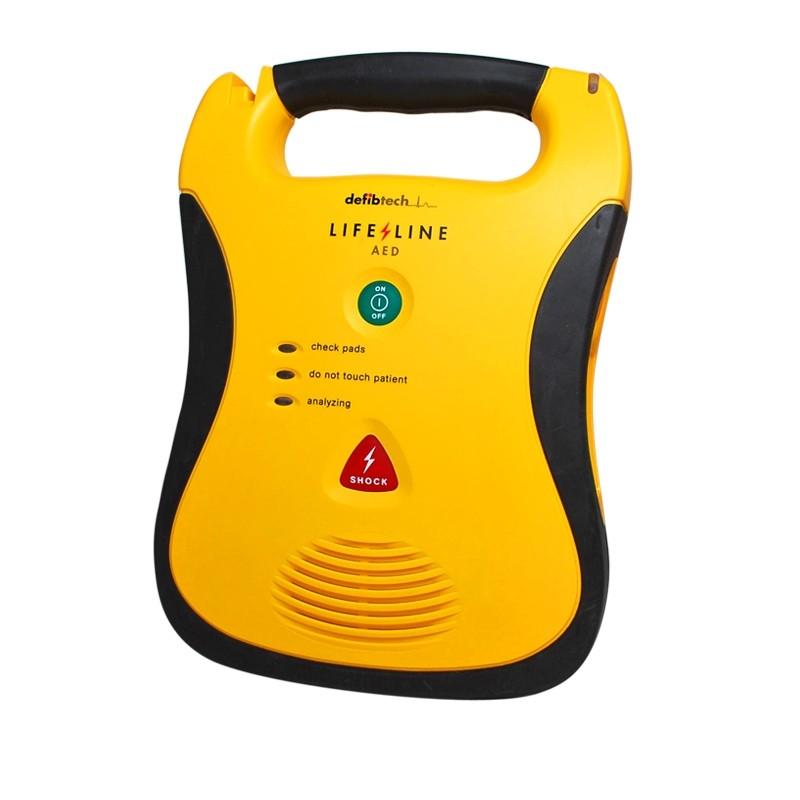What Is an Automated External Defibrillator?

An automated external defibrillator (AED) is a lightweight, portable device that delivers an electric shock through the chest to the heart. The shock can potentially stop an irregular heart beat (arrhythmia) and allow a normal rhythm to resume following sudden cardiac arrest (SCA). SCA occurs when the heart malfunctions and stops beating unexpectedly. If not treated within minutes, it quickly leads to death. Most SCAs result from ventricular fibrillation (VF). VF is a rapid and unsynchronized heart rhythm that originates in the heart’s lower chambers (the ventricles). The heart must be “defibrillated” quickly, because of a victim’s chance of surviving drops by seven to 10 percent for every minute a normal heartbeat isn’t restored.
Why are AEDs important?
AEDs make it possible for more people to respond to a medical emergency where defibrillation is required. Because AEDs are portable, they can be used by nonmedical people (lay-rescuers). They can be made part of emergency response programs that also include rapid use of 9-1-1 and prompt delivery of cardiopulmonary resuscitation (CPR). All three of these activities are vital to improving survival from SCA.
How does an AED work?
A built-in computer checks a victim’s heart rhythm through adhesive electrodes. The computer calculates whether defibrillation is needed. If it is, a recorded voice prompts the rescuer to press the shock button on the AED. This shock momentarily stuns the heart and stops all activity. It gives the heart the chance to resume beating effectively. Audible prompts guide the user through the process.AEDs advise a shock only for ventricular fibrillation or another life-threatening.

Who can use an AED?
Non-medical personnel such as police, fire service personnel, flight attendants, security guards and other lay rescuers who have been trained in CPR can use AEDs. Although formal training in the use of an AED is not required, it is recommended to help the rescuer increase their comfort and level of confidence. However, AEDs are intended for use by the general public. Most AEDs use audible voice prompts to guide the user through the process.
Are AEDs safe to use?
AEDs are safe to use by anyone. Some studies have shown that 90 percent of the time AEDs are able to detect a rhythm that should be defibrillated. This data suggests that AEDs are highly effective in detecting when (or when not) to deliver a shock.
Where should AEDs be placed?
All first-response vehicles, including ambulances, law enforcement vehicles and many fire engines should have an AED. AEDs also should be placed in public areas such as sports venues, shopping malls, airports, airplanes, businesses, convention centers, hotels, schools and doctors’ offices. They should also be in any other public or private place where large numbers of people gather or where people at high risk for heart attacks live. They should be placed near elevators, cafeterias, main reception areas, and on walls in the main corridors.

